
This is a great lab to do with students during October while most grocery stores stock dry ice for Halloween! Explore sublimation in action!
- Subject:
- Chemistry
- Material Type:
- Activity/Lab
- Author:
- Elaine Ready
- Date Added:
- 10/23/2023

This is a great lab to do with students during October while most grocery stores stock dry ice for Halloween! Explore sublimation in action!
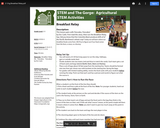
This lesson pairs with the book "Pancakes, Pancakes!" by Eric Carle. First read this story and then run the breakfast relay outlined in this lesson.
NGSS: K-ESS3-3
CCSS: SL.K.3
Social Sciences: K.10, K.17, 1.12, 3.12, 5.11, 4.18
Time: 30 minutes
Materials: "Pancakes, Pancakes!" by Eric Carle, food cards and bags labeled: earth, farm, store, factory.
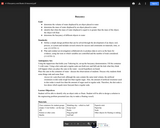
This unit consists of five lessons covering buoyancy and engineering boats. Each lesson includes goals, anticipatory set, learner objectives, guided practice, procedure instructions, closing activities, and extensions. Student handouts and worksheets are also included.
Lesson 1: Intro to Buoyancy
Lesson 2: Engineer a Barge
Lesson 3: Intro to Sails & Motion
Lesson 4: Engineer a Sailboat
Lesson 5: Final Vessel
NGSS: 3-5-ETS1-1, 3-5-ETS1-2, 3-5-ETS1-3
Lesson 1 materials: empty 2-liter bottles with tops cut off, pennies or other coins, marble, modeling clay, crap wood, rocks, pingpong ball, golf ball, popsicle stick, paper clip, scale, other object for floating or sinking
Lesson 2 materials: for each student - 12" x 12" piece of aluminum foil, 4 popsicle sticks, 2 straws, 12" masking tape; teacher pre-setup - enough pennies for testing (500 pennies per group), pool filled 2/3 with water
Lesson 3 materials: string/yarn, 1/2 straw for each student, 2 different types of paper (tissue & white copy paper), tape, scissors, fan, wooden skewers, 2 popsicle sticks per student, rulers, protractors, stencils.
Lesson 4 materials: 8 popsicle sticks, 1 wooden skewer, 1 straw, masking tape or duct tape, tissue paper or copy paper
Lesson 5 materials: same as Lesson 2
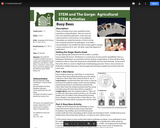
In this lesson, students will learn about bees and their connection to agriculture. Includes activity instructions, variations, and exentsion activities.
NGSS: 2-LS2-2
Common Core: RL.1.1, RI.7, SL2.5
Social Sciences: K.11
Time: 45 minutes
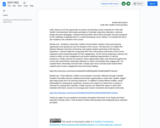
Included are two modules for COM 346: Health Communication that employ principles of culturally responsive education, universal design and open pedagogy.
Module one: “Academic citizenship: Health Communication” details a three-part learning opportunity to be spread out over the duration of the course. The idea here is to flatten the distance between instructor and learner and support student ownership of the learning experience.
Module two: “Final reflection: Health Communication” promotes reflection through a flexible invitation that offers learners traditional and artistic opportunities to share their “golden nugget” take-away points from our learning experience.
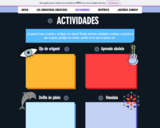
Una página web dedicada para incentivar a niños de primaria alta a ser creativos. Se proporcionan videos y actividades dinámicas para que logren desarrollar su creatividad y le den más valor al arte.
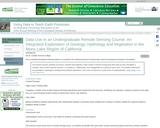
This activity requires students to process, interpret and integrate a wide variety of remote sensing and other data as they investigate a complex, open-ended research question. It is hands-on, collaborative, and manageable for a variety of class sizes. The problem addressed has geological, hydrological, biological and political implications, and is thus of interest to a wide array of undergraduates.
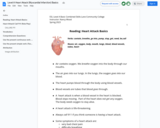
Introduces situational vocabulary to ESL students. This activity contains a roleplay and exercises to teach students to convey an emergency situation in English.

Students will describe what they like to do in their free time. Students will also express what new hobbies interest them or they would like to participate in.

This brief instructor-facilitated activity asks students to observe a simple demonstration, record their observations, and apply their knowledge to other conditions. It was written by Johnathan Hugh Broome from University of Southern Mississippi.
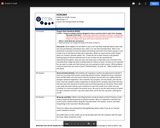
In this lesson, students will learn what erosion is and how human actions influence erosion. Includes introduction, demonstration instructions, and questions for wrap-up discussion.
NGSS: 2-ESS2-1
Time: 50 minutes
Materials: plastic containers with sand and gravel, sponges, and plastic cups
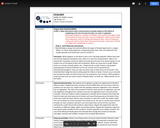
In this lesson, students will learn what erosion is and how human actions influence erosion. Includes introduction, demonstration instructions, and questions for wrap-up discussion.
NGSS: 4-ESS2-1
Time: 55 minutes
Materials: plastic containers with sand and gravel, sponges, and plastic cups
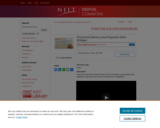
These two videos teach students how to build a structurally sound popsicle stick bridge then uses this lesson to teach the importance of budgeting.
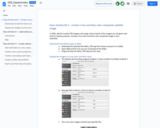
This guide walks you through three activities for students to complete:
Class Activity 3.2 – Create a true and false color composite satellite image.
Class Activity 5.1 – Label states and capitals in the northeastern US.
Class Activity 7.1 - Create a Bend-centered Equidistant Map Projection.
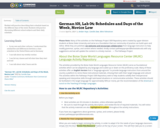
Student will practice describing their schedule based on the different days of the week. Students will practice discussing different school subjects and their daily schedule.
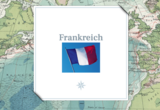
Students will work together to match German sights to their descriptions and try to find interesting facts about a couple of the Sights that they would like to know more about.

Student will practice interpreting an authentic German schedule as well as describing their own school schedule based on the different days of the week. Students will practice discussing different school subjects and their daily schedule.

Student will practice describing their schedule based on the different days of the week. Students will practice discussing different school subjects and their daily schedule.

Student will practice interpreting an authentic German schedule as well as describing their own school schedule based on the different days of the week. Students will practice discussing different school subjects and their daily schedule.
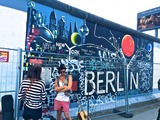
Students will work together to match German sights to their descriptions and try to find interesting facts about a couple of the sights that they would like to know more about.